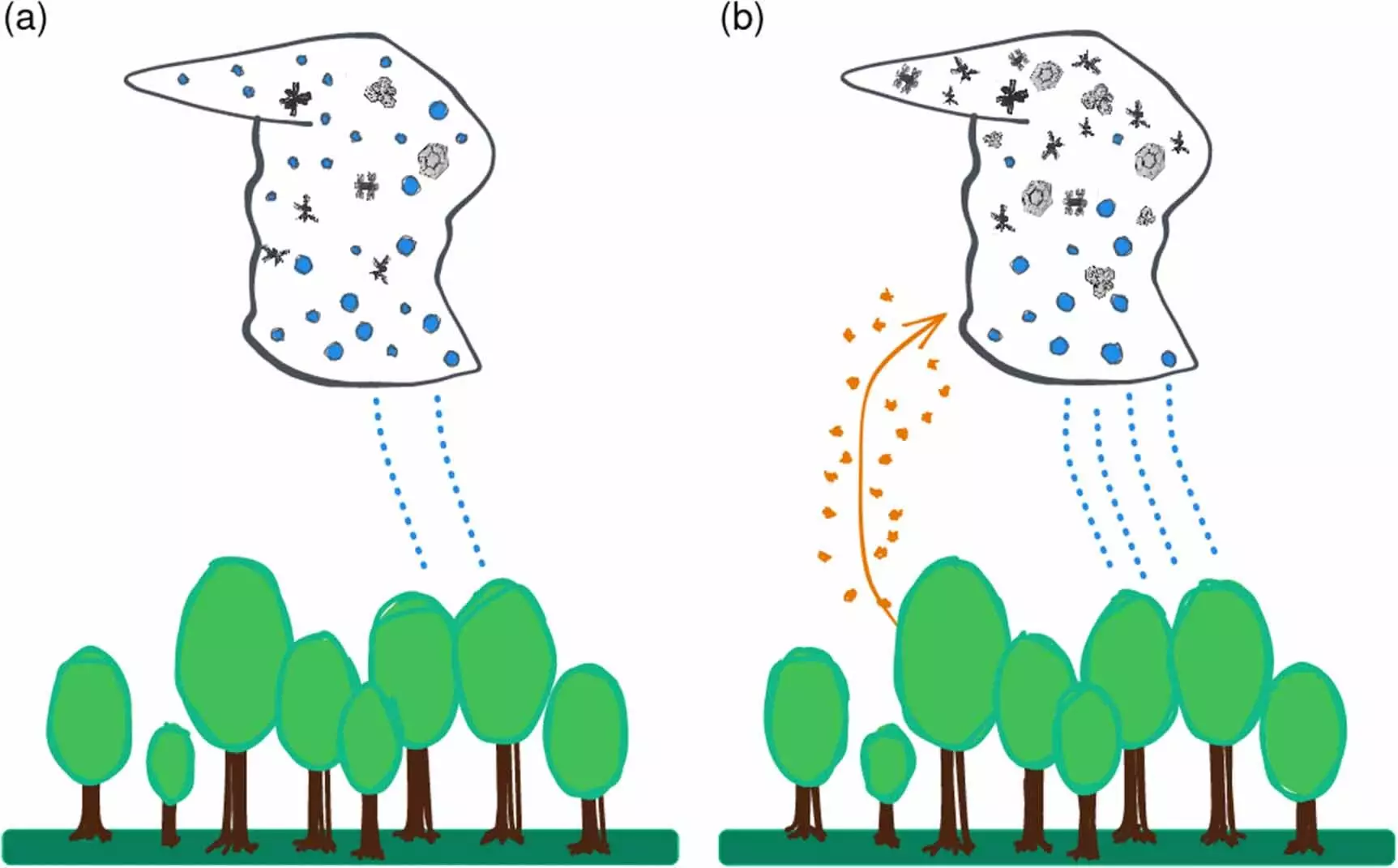Recent scientific inquiries have uncovered a compelling connection between increased pollen concentrations in the atmosphere and alterations in precipitation dynamics, particularly during spring months in the United States. Observations from both terrestrial and satellite sources indicate that the presence of pollen can significantly enhance cloud ice formation, which in turn drives precipitation events, even at low temperatures ranging from -15 to -25 degrees Celsius. Dr. Jan Kretzschmar, a leading meteorologist involved in this research, emphasizes the role of pollen as an ice nucleus, which lowers the freezing temperatures of water in clouds, facilitating the process of precipitation.
This phenomenon is critical, as typically, water droplets in clouds require temperatures below -38 degrees Celsius to crystallize. Thus, the implication of such findings is profound: pollen not only plays a role in weather patterns but might also influence broader climate trends.
Ice nucleating particles (INPs) are essential for cloud ice formation and precipitation processes. Pollen grains, with their specific physical characteristics, can act as INPs, offering a unique mechanism for enhancing precipitation in specific regions. While the influence of pollen on a global scale might be overshadowed by other atmospheric components like dust, its regional and seasonal impacts are indeed noteworthy, particularly evident in spring when vast amounts of pollen are released into the atmosphere.
As Dr. Kretzschmar elaborates, larger pollen grains are transient visitors in the atmosphere due to their size; they are quickly bound to surface particles. However, the research reveals that smaller fragments generated when pollen grains rupture in humid environments can remain airborne for a more extended period. When present in adequate quantities, these smaller particles can ascend into colder atmospheric layers, contributing significantly to ice formation.
The consequences of human-induced climate change on pollen dynamics are alarming. The onset of the pollen season has shifted earlier due to warming temperatures, resulting in longer pollen seasons with higher concentrations in the atmosphere. This shift could lead to an uptick in localized and severe precipitation as key weather patterns evolve in response to enhanced pollen concentrations.
The continuous rise of pollen levels may not only contribute to increased precipitation but also affect other ecological and weather-related interactions. This ultimately raises pressing concerns about how we will adapt to these climatic changes. Further complicating the scenario is the correlation between biodiversity and these atmospheric phenomena. A multitude of plant species releasing pollen simultaneously can intensify their effects on cloud formation and subsequent precipitation levels.
These findings, published in the Environmental Research Letters, underscore the necessity for comprehensive future research into the interplay between pollen dynamics, climate change, and biodiversity. As stated by Professor Johannes Quaas from Leipzig University, understanding this complex interaction is crucial for improving climate models and predictive accuracy.
In-depth studies are required to decipher how these biological components influence climatic shifts and, subsequently, atmospheric behavior. With biodiversity loss potentially influencing the quantity and types of pollen released, the climatic consequences could be unpredictable and profound.
This novel understanding of the crucial role that pollen plays in enhancing precipitation and influencing cloud dynamics highlights a previously underappreciated aspect of atmospheric science. The collaborative study, involving prestigious institutions like the Max Planck Institute and the Leibniz Institute for Tropospheric Research, emphasizes the urgent need for coordinated research efforts to better simulate and predict these interactions.
As climate change continues to reshape our environment, understanding the relationship between pollen and weather patterns will become increasingly vital for future climate resilience strategies. As our planet evolves, so too must our comprehension of its complex systems. Addressing these challenges head-on will equip us with the necessary knowledge to adapt and mitigate the impacts of these dynamic ecological and atmospheric changes.


Leave a Reply